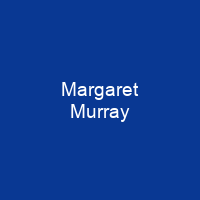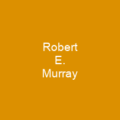Margaret Alice Murray was an Anglo-Indian Egyptologist, archaeologist, anthropologist, historian, and folklorist. In 1908 she led the unwrapping of Khnum-nakht, one of the mummies recovered from the Tomb of the Two Brothers. She focused her research on the witch-cult hypothesis, the theory that the witch trials of Early Modern Christendom were an attempt to extinguish a surviving pre-Christian, pagan religion devoted to a Horned God. Murray was the first woman to be appointed as a lecturer in archaeology in the United Kingdom.
About Margaret Murray in brief

The influence of her witch- cult theory in both religion and literature has been examined by various scholars, and she has been cited as having a hybrid identity that was both British and Indian. Murray never received a formal education, and in later life expressed pride in the fact that she had never had to sit an exam before entering university. In 1870, Margaret and her sister Mary were sent to Britain, moving with their uncle John Lambourn, a vicar and his wife Harriet at their home in Lambourn,. Although John provided them with a strongly Christian education and a belief in the inferiority of both women, she would reject the idea of both. In 1894 she began studying Egyptology at University College London. In 1902–03 she took part in Petrie’s excavations at Abydos, Egypt, there discovering the Osireion temple and the following season investigated the Saqqara cemetery. From 1921 to 1931 Murray undertook excavations of prehistoric sites on Malta and Menorca. In 1937 she led a small excavation at Petra in Jordan. In later life, she lectured at such institutions as the University of Cambridge and City Literary Institute, and continued to publish in an independent capacity until her death. Murray was married to James Murray, a businessman and manager of the Serampore paper mills who was thrice elected President ofthe Calcutata Chamber of Commerce. His wife, Margaret had moved to India from Britain in 1857 to work as a missionary, preaching Christianity and educating Indian women.
You want to know more about Margaret Murray?
This page is based on the article Margaret Murray published in Wikipedia (as of Nov. 30, 2020) and was automatically summarized using artificial intelligence.







